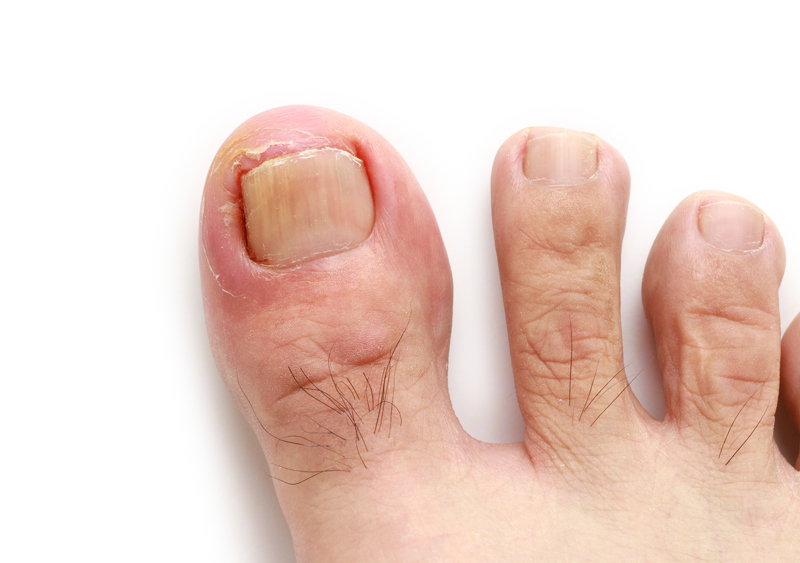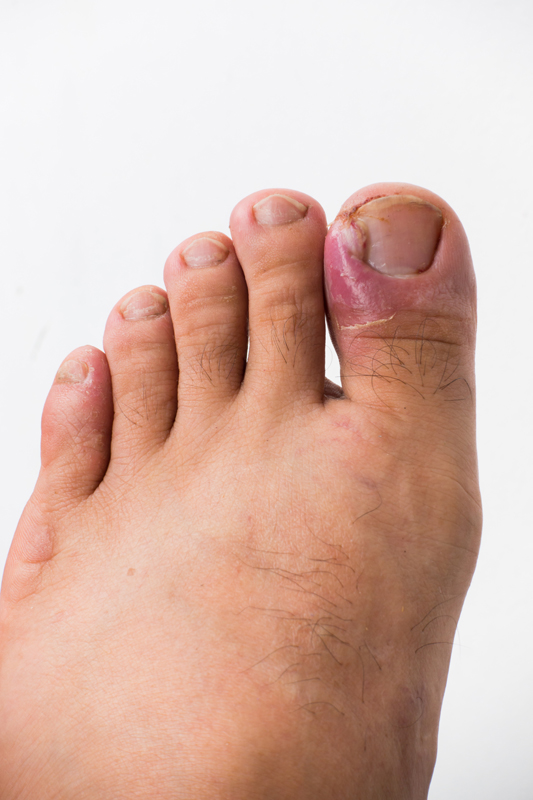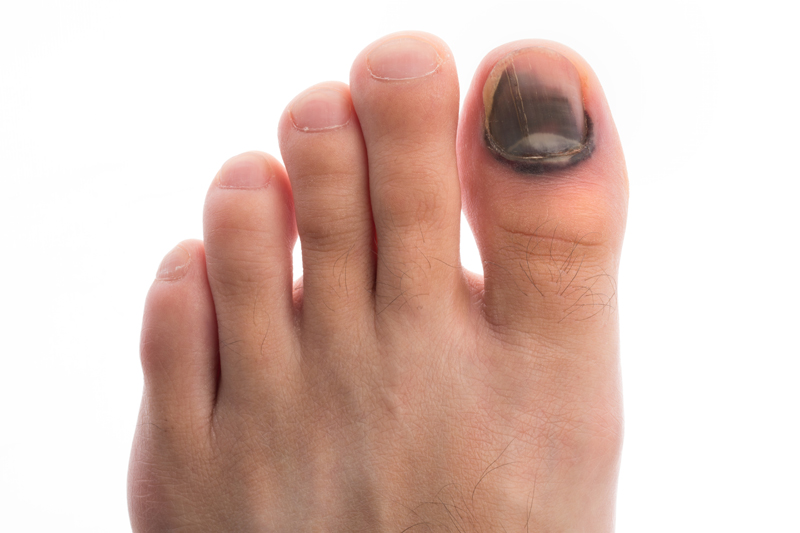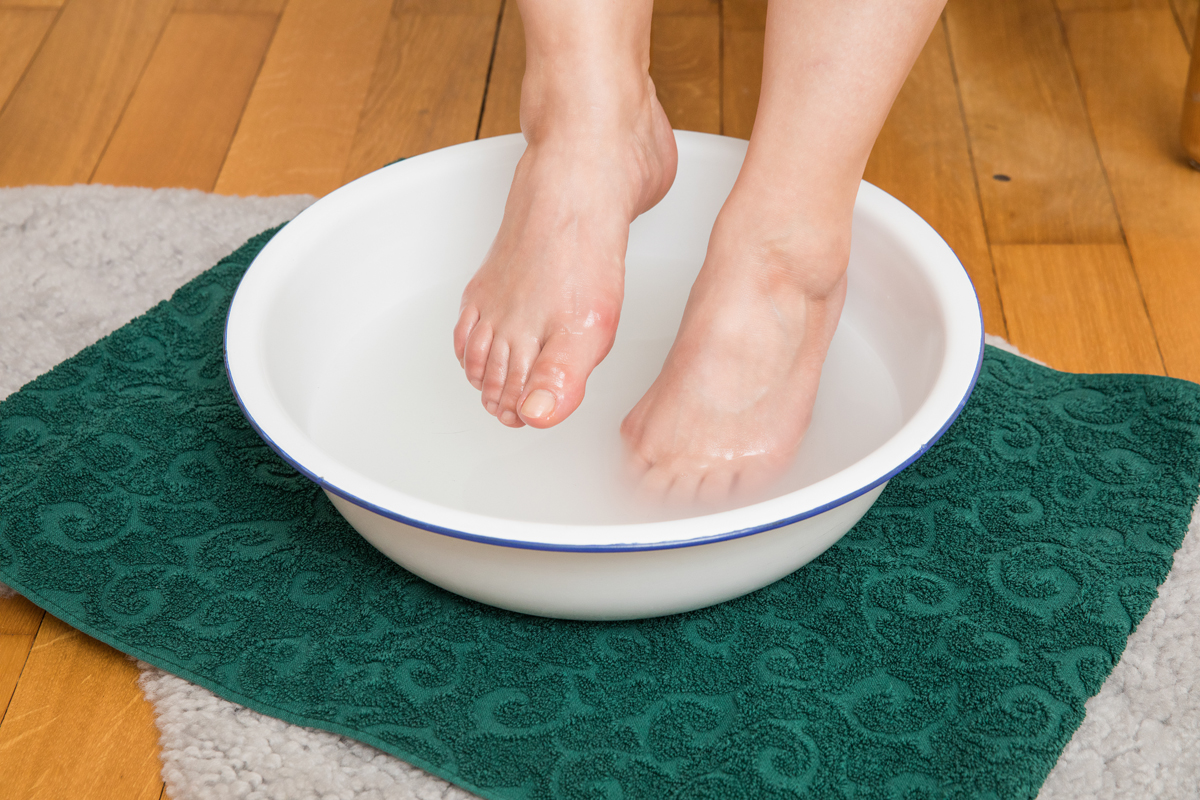We know it’s hard being confined to your home – particularly in a time of high stress. This is only going to feel worse if you’re suffering from a painful toenail. Painful nails can be caused by several different things – this may be an ingrown toenail, inflammation of the nail border known as paronychia; or discomfort caused by increased pressure under the nail plate from a build-up of dead skin. If you have kicked or dropped something on your toe then it’s possible you may have developed bruising under the nail plate too.
First, let’s figure out what is causing your toenail pain. If your pain is primarily around the base of your nail plate (the point which is closest to the foot) and if it seems that the skin around the edges of the nail is more uncomfortable to apply pressure to, rather than when you press on the nail itself – it’s likely that you are suffering from paronychia.
If your pain is more around the distal (far end) of your toenail and the skin appears pink, puffy and inflammed, or if there is pus present around the border of the nail – you have an ingrown toenail where the nail has cut into your skin. If this is the case, but there is no pus present then it may just be caused by an increase of pressure due to a build-up of debris (dead skin/dry skin/sock fluff/sand) under the free edge of the nail.
If you have recently kicked your foot into something, worn shoes which are very tight across the toes, or dropped something on your toe, and have also noticed some odd discolouration under your nail plate; it’s possible you have subungual bruising (bruising under the toenail).
So, we are going to help you keep your feet more comfortable while you are unable to come and visit us in clinic for your foot care needs. There is quite a range of helpful steps you can take to improve your foot comfort while you are at home.

If you have paronychia (inflammation of the skin around nail border): this is often caused by splits or breaks in the skin around the nail which allows infection to get in – particularly in the cuticle (this is why it is important not to cut or trim your cuticles). We want to help bring down the infection and inflammation as this is what is causing your pain.
- Salt baths – creating a foot bath where you can soak your feet in warm water with a few teaspoons of table salt will help to bring down inflammation and also clean the area.
- Apply some antibacterial (eg Betadine, Crystaderm, Savlon or similar) to a bandaid and apply this to your freshly salt-bathed toe.
- Repeat these two steps daily and we would expect this to settle down within 24-48 hours.
If you think your toe pain is from an ingrown toenail or a build-up of debris under the edge of the nail plate:

- Before you do anything else – wash your hands, especially if there is any pus or broken skin possible
- Soak your foot or feet in a salt bath as per instructions above.
- If the nail is long and needs trimming, gently trim the nail. When cutting nails, it is fine to cut them on a gentle curve following the shape of your toe – you do not have to cut them straight across as this leaves a sharp corner on the edge of the nail. Please ensure you cut right to the edge of the nail – don’t rip or tear the last bit as this often is the cause of ingrown toenails.
- If you notice dead skin or sock fluff or other debris is visible where you cut the nail back from, gently clear this away using the metal file from your nail kit, or thoroughly wash it out.
- Apply some antibacterial cream (Betadine, Crystaderm, Savlon or similar) to a bandaid and cover your toenail with this. Leave this on for up to 24 hours, or until your next shower/salt bath.
- Repeat salt baths daily along with application of dressing with antibacterial.
- You may also find going barefoot or wearing sandals helps to reduce pressure over the toenail.
If you think you have bruised underneath your toenail:

- Be gentle! You have damaged your nail bed, and we want to protect this from further damage to prevent your nail growing back in an abnormal manner
- If this has just happened (in the last 24 hours), wrapping a bag of frozen peas or an icepack in a tea towel and applying this to the area for 15 min increments every hour may help to prevent further bruising, swelling, and inflammation
- If the toenail is long or needs cutting, gently cut the nail with nail clippers, and file the free edge of this, being extra careful not to damage the skin in the area
- If the toenail feels like it is floating on top of the bruise or a blister, we generally do not recommend attempting to drain this. However, if it remains painful for several days and the fluid is not disappearing, then you may do so, but you should follow the following instructions.
Do NOT attempt to pop the fluid filled area UNLESS you have:
- Thoroughly cleansed the toe in a warm salt bath Washed your hands for at least 20 seconds with soap and water prior to touching your toe
- Use a sterile needle or blade to lance it (the best you can do at home is boil this for 10 mins at least)
- Cleanse the toe again afterwards in a FRESH warm salt bath
- Dress the toe with an antibacterial liquid or cream such as Crystaderm, Betadine, Savlon or similar and keep it covered with a bandaid until your next shower.
- Continue to do salt baths daily and dress this daily with antibacterial and a bandaid for the next 4-5 days until it has healed.
- Avoid touching the toe and avoid wearing tight shoes or socks.
If your toenail pain does not settle down within 48 hours, or if it continues to appear red, hot, painful and have pus present, give us a call on 0800 473 7763, or visit our website to organise a video appointment if you would like us to have a look at what’s going on and offer any additional advice or support.
By Bronwyn Easterbrook-Smith

